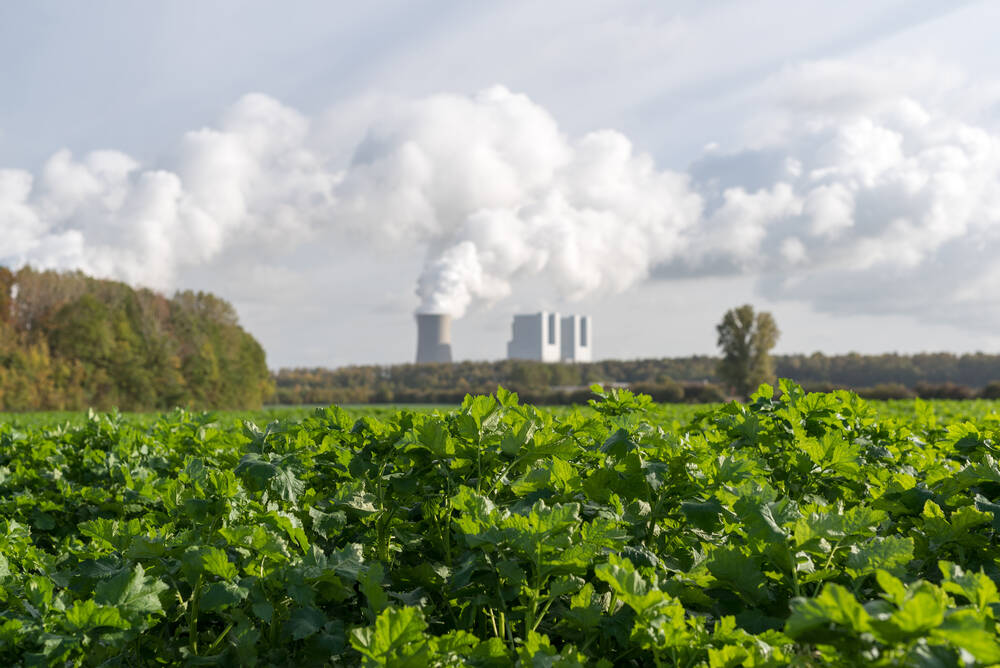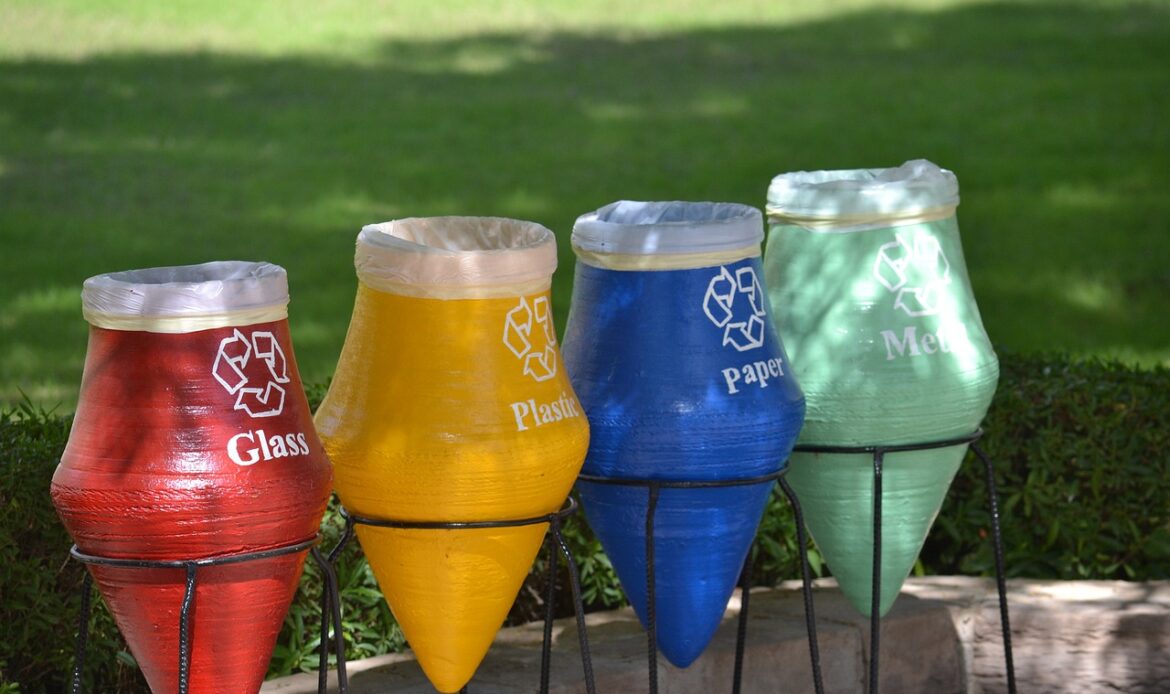The circular economy model is a shift away from the linear economy, where fossil fuels and raw materials are used once and discarded. Circular practices rethink how we design, use, and recover products and materials reducing greenhouse gas emissions, protecting natural systems, and cutting waste and pollution. By introducing new business models focused on longevity and reuse, this approach supports job creation, delivers economic benefits, and reduces environmental impact. In this blog, we explore 15 circular solutions transforming the value chain, reshaping products and services, and creating a more resilient economic model for the future.
What is a Circular Economy?
Circular economy practices are methods and systems designed to reuse resources through repairing, recycling or sustainable production methods, minimising waste. This actively counteracts overexploitation by reusing resources, not exploiting new raw materials.
Examples of this are IKEA, with replaceable parts in furniture to swap out if faulty rather than discarding the entire piece, lowering the need for energy-intensive manufacturing processes.
Patagonia’s trade-in program encourages their customers to return clothes rather than dispose of them, reusing them or restoring quality for resale.
Another example is Too Good To Go, allowing restaurants to dispose of their excess or unneeded stock at very low prices to consumers who collect it, saving it from going to waste.
Countries like Finland and the Netherlands are leaders for circular economy practices, due to their strong policy frameworks and public-private innovation partnerships. Developing countries are less equipped with the infrastructure and investment to do so, hence are more reliant on linear resource extraction, but changes are being made to improve waste management and adopt circular models.
The UK is heading in the right direction with legislation and incentives like the Circular Economy Package (which sets targets for waste reduction and product reuse) or the Plastic Packaging Tax (which charges businesses for using less than 30% recycled plastic in packaging).
Beyond the environmental benefits, this is key for us economically. The world’s leading economies right now (like the US, China, or Germany) are not secure long term. They rely on finite raw materials and fragile global supply chains which in 10–20 years could very well become too costly, volatile, or depleted to sustain current levels of production and consumption.
Reduces Carbon Emissions

All circular economy practices lower carbon emissions in one way or another, from car sharing lowering fuel emissions to second-hand markets curbing emissions from fast fashion.
This means that it’s now commonplace in developed countries to dispose of clothes after a few wears and constantly refresh wardrobes, rather than restoring and mending.
The rise of one-tap purchasing and 24-hour delivery has accelerated this. In turn, large-scale effects of overproduction, textile waste, and carbon emissions are devastating the environment.
Thankfully, circular fashion is trending, with the UK charity shop scene and apps like Depop and Vinted encouraging second-hand shopping over new purchases. New green regulations help push brands toward transparency and accountability, while natural and recycled fabrics are gaining traction.
Beyond fashion, industries like transport, construction, and tech are crucially albeit slowly adopting circular models. While slight reforms such as using recycled materials or extending product lifespans can gradually reduce footprints over time, new policies, regulations, and rethought models must roll out in order to see deep, systemic cuts in emissions.
Minimises Waste
Emissions should follow cyclical journeys of life and purpose such as a glass bottle being used, collected, sterilised, refilled, and used again. In this case, the emissions are simply moved through people and places in different forms.
In non-circular economies, emissions can only end up as waste.
Waste management is incredibly carbon-intensive. It involves massive incinerators burning plastics and releasing CO₂ with toxic pollutants. Landfills over 2,000 acres long can home mountains of decomposing, methane-releasing waste.
In the Pacific Ocean, a vast accumulation of plastic waste swirls continuously, covering an area over twice the size of Texas. The plastic has come from rivers, industrial waste, and global shipping routes, and despite efforts to clean it up, is breaking down into GHG-releasing microplastics.
Efforts are in place to make the systems more circular. Landfill methane capture systems are strategically placed near waste sites to trap around 75% of methane emissions instead of entering the atmosphere. They are converted into energy to power homes and industries.
Plastic bans, composting revolutions, and the rise of the circular economy are amongst many big shifts in place essential to reducing waste-related emissions and more sustainable industry.
Conserves Natural Resources

Natural resources encompass everything from microscopic organisms to the sunlight of day, but can be compartmentalised into four broad categories. Renewable resources are those that naturally replenish so the sun, water, wind, and heat of the Earth, forests, and wildlife. These can be overexploited faster than they are able to regenerate. A tree can take 100 years to grow, but get knocked down in minutes.
In non-circular economies, overexploitation occurs when a natural resource is being depleted at a faster rate than it can be replenished. Deforestation is when trees and forests are cut down at a small or large scale for the purposes of agriculture, logging, urbanisation, infrastructure development, resource extraction or other needs. Forests, woods and trees are some of the strongest carbon dioxide sinks on the planet, and wiping them out causes a huge increase in CO₂ levels, enhancing global warming and disruptions in weather patterns.
Circular economies counteract overexploitation by reducing waste and reusing resources, not exploiting new raw materials. Sustainable practices are essential for ensuring the survival of ecosystems and species.
Lowers Environmental Pollution
Our heavily-polluted environment is for the most part due to linear economies extractive industries, overproduction, and throwaway culture emissions coming from multiple sources, every day, all day, all week, build up significantly over time.
For instance, air pollution comes from deforestation, habitat destruction, and the loss of vegetation that would naturally filter pollutants. Water pollution is driven by wetland destruction and the disappearance of aquatic species that regulate water quality. Soil pollution stems from agricultural runoff, chemical fertilisers, and industrial waste contaminating already degraded ecosystems. Product pollution comes from fast fashion, toxic e-waste, and harmful microplastics.
Circular economies counteract this by rethinking the system: forests are preserved and sustainably managed, with wood waste repurposed into new materials. Natural floodplains are protected and restored to filter water and store carbon. Regenerative agriculture brings circular movements to nature and strengthens soil in the long term. E-waste is counteracted by reducing consumption, donating, recycling and refurbishing old electronics.
Reusing instead of discarding is the key to lowering environmental pollution and moving towards a more stable, secure environment.
Creates Green Jobs
Green jobs are paid roles that directly protect or restore the environment, such as by reducing waste (electronics repair technician), lowering emissions (recycling plant operator), or conserving resources (water management specialist).
For today’s millennials, sustainability topics would have been far and wide in terms of their primary school curriculums. For kids today, topics such as circular economy, carbon footprints, and green jobs are increasingly being implemented.
The UK government’s Sustainability and Climate Change Strategy aims to educate on sustainability across all levels. This includes every school in the UK to have a ‘sustainability lead’, with other foundations being laid to ensure new jobs are green, and gaining the prevalence they need for future generations.
Enhances Supply Chain Resilience
Through circular economies, supply chains naturally become more efficient, optimised and carbon footprints are lessened.
Upstream emissions refer to supply chain activities early in the supply chain, such as forestry operations, textile sourcing, agricultural production, oil and gas extraction, or mining raw materials.
To make this more circular, companies can use recycled materials rather than new, choose sustainable suppliers, and go for regenerative and renewable sources.
Downstream emissions refer to the chain’s later stages, where the finished product heads towards customers or end-users. This involves end stages of a product’s life, plus communications with distributors, retailers, and end customers.
To make these more circular, organisations should design reusable products rather than single-use, offer take-back schemes, or consider systems to reduce waste and recover materials (such as the Apple trade-in programme).
Encourages Innovation
Circular models bring innovation. Established circular products include recycled plastic bottles and refurbished electronics, but many smaller businesses are just starting out with fresh ideas such as mushroom-based packaging or clothing rental platforms.
Around 40% of the world’s waste comes from packaging materials. Plastic is built cheap, often single-use, and simple. Food packaging plays a large role in this, with 51% of supermarket food and drink in unnecessary plastic.
From more circular thinking, innovations have begun to make waves in the packaging industry that shine a light on long-term security and sustainability. Loop (TerraCycle) is a global platform allowing people to buy products in reusable containers.
It works by having customers browse the online platform, ordering the products, receive them in Loop’s specific packaging, using them, scheduling a free pickup, Loop collects and cleans, then it’s sent to a new customer.
Partnered with global brands such as Nestlé and Unilever, they continue to grow.
Extends Product Lifespan
The linear model of take, make, use, dispose is unsustainable and harmful to the environment.
Apple has been accused of slowing down iPhones to push people to dispose of older models and buy newer ones. In 2017, they actually admitted this, saying it was to preserve battery life and prevent unexpected shutdowns though ultimately contributing to significant overconsumption.
In 2022 alone, an estimated 5.3 billion phones were discarded, with a significant chunk likely Apple devices due to their global market share.
Today, broader thinking is needed to accommodate a world of finite resources, stricter regulations and rising consumer consciousness. Fairphone, founded in 2013, is a standout example. They designed a modular phone where every part screen, battery, speaker, camera can be replaced with a standard screwdriver. If something fails, you order the part and fit it yourself. A typical replacement, like a battery or screen, costs around £30–60.
It’s this kind of circular thinking functional, user-first and waste-conscious that will steer us into sustainable economies and environmental responsibility.
Reduces Landfill Use

A staggering proportion of our everyday products are designed to go straight to landfill, created with zero chance of a circular lifecycle. Examples include crisp packets, single-use coffee cups, disposable razors, toothbrushes used then disposed of.
In product design, the goal should be to avoid landfill at all costs. To reduce your carbon footprint, ideally, you’d eat food from reusable packaging, drink refillable water, wear second-hand clothes, refurbish electronics, and repair things before replacing them.
This is how the world ran pre-1950s, before the creation of single-use plastic, disposable culture, and industrial convenience where possible.
Supports Sustainable Economic Growth
If circular economies decouple economic growth from resource extraction, how do they keep selling? Do they have to wait for customers to finish use before they can pass products on?
No circular businesses sell without dependence on more and more production. Instead of selling things, they may sell a service. For instance, businesses can pay for masses of bulbs, hire someone to fit them, pay for electricity over time, then trash and replace them when they break.
Alternatively, they can use a service like Phillips light as a service that fit it, maintain it, own it, cover electricity costs, and retrieve it for repurposing at end-of-life.
An average office with 500 bulbs could incur around £50,000 in electricity costs over several years, £10,000 in installation expenses, and £8,000 in maintenance and replacement costs. The Phillips service could cut these costs by 50%.
Beyond services, circular businesses can take in revenue from repairs, resales, digital platforms, and other innovative methods.
Promotes Energy Efficiency
Closed-loop manufacturing is the process of utilising recycled and reclaimed materials like aluminium or plastic instead of making them from scratch. The traditional processes such as mining and smelting use masses of energy, when the product of linear production is likely to be discarded after a single use.
New models of shared ownership like the car-sharing economy, which has seen success in urban centres across Europe, mean that not everyone needs their own. As a result, less energy is used in both the creation of the vehicle and the destruction of the end-of-life waste.
Lowers Production Costs Over Time
Circular models can require a larger upfront investment, but offer long-term savings. For instance, traditional models of lighting installation and maintenance can be replaced by lighting-as-a-service, costing around £20,000 upfront, but making savings of £30,000+ after five years.
Redesigning concreted models of businesses is time-consuming and costly, using resources like staff retraining, new systems, and supply chain restructuring, but over time the wasteful expenses like material overuse and landfill disposal fees are out of the balance sheet, replaced with efficient processes and reclaimed value from product reuse.
Reduces Dependency on Raw Materials
By circulating materials through repurposing, reusing, and recycling, new circular economies depend up to 90% less on raw material production. Virgin inputs like steel, aluminium, and petroleum-based plastics are replaced with sustainable solutions such as recycled composites or biobased alternatives meaning the energy of the original extraction is constantly retained and looped instead of being used once and discarded.
As a crucial benefit, less land is needed for manufacturing processes. Fewer quarries disrupt ecological conditions by stripping landscapes and releasing particulate pollution, and fewer forests are unsustainably deforested for timber, pulp, or agricultural expansion.
Strengthens Local Economies
Circular economies challenge the top-down model whereby conglomerates sustain economic imbalance through outsourced production, mass manufacturing, and short-term profit-driven waste.
In contrast, we should promote decentralised, grassroots systems such as the repair café movement supporting many local economies like independent fixers, makerspaces, and refill shops.
They achieve this by creating local maintenance and repair jobs, encouraging small-scale manufacturing that meets low-volume, high-value demand, and keeping money circulating within communities rather than funnelled out through global supply chains.
Supports Climate Change Mitigation
Linear, industry-leading models can be significant drivers of climate change emissions from the aviation industry; construction demanding constant deforestation of forests.
Circular economies tackle this by removing the reliance on carbon-intensive industries and restructuring the model at its root to make it sustainable.
Ecosystems remain conserved with no demand for harmful mass production, emissions are reduced as vast majorities of products are diverted from landfill, and materials are kept in circulation.
In 2023, it was estimated that only 7.2% of the world is circular, meaning that over 90% of economies maintain the extract, use, and discard model. That being said, circularity is on many global agendas major policy reform is in the works, benefits to business are tenfold, and momentum is rising.
More Information
https://ourworldindata.org/data-insights/packaging-is-the-source-of-40-of-the-planets-plastic-waste
https://www.epa.ie/environment-and-you/circular-economy
https://stateofgreen.com/en/news/10-examples-of-circular-economy-solutions
https://www.dssmith.com/uk/media/our-stories/2024/10/material-change-index

